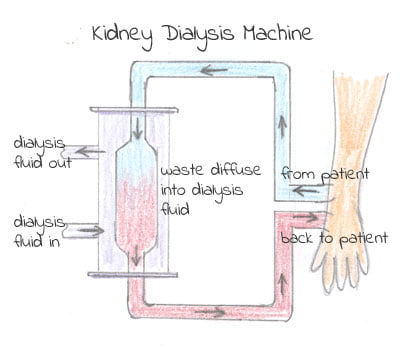
Homeostasis
Homeostasis is the process that keeps your body’s internal environment stable, no matter what’s happening outside. Learn how your body controls things like temperature, water balance, and waste removal through systems like the kidneys, hormones, and nervous system. It's all about keeping you in balance so your cells can work properly.
What is Homeostasis?
Homeostasis is the regulation of internal conditions in the body to maintain a stable environment, essential for cells to function properly. It keeps key factors like body temperature, blood glucose, and water levels within safe limits, despite external changes.
The body uses automatic control systems that involve:
- Receptors to detect changes (stimuli)
- Coordination centres (like the brain) to process the information
- Effectors (like muscles or glands) to carry out responses and restore balance
Controlling Body Temperature
Maintaining a stable core body temperature (around 37°C) is vital for enzymes to work effectively. The thermoregulatory centre in the brain detects temperature changes and responds accordingly:
If you’re too hot:
- Sweating helps cool the body through evaporation
- Vasodilation widens blood vessels near the skin to increase heat loss
If you’re too cold:
- Shivering generates heat through muscle movement
- Vasoconstriction narrows blood vessels to reduce heat loss
- Hairs stand up to trap insulating air (in some animals)
Revision Notes

The Cornell method is like a supercharged note-taking system that helps you ace your revision!
Print out our blank revision notes pages to help you revise.
How to make effective revision notes with the Cornell method.
Exam Questions & Answers

Download and print off practice our FREE worksheet with exam style questions on Cell Biology.
The Role of the Kidneys in Homeostasis
The kidneys are vital for regulating water, ion (salt), and urea levels in the body. They filter the blood and remove excess substances, forming urine which is passed to the bladder.
This process involves:
- Filtration of blood in the kidneys
- Selective reabsorption of glucose, water, and needed ions
- Removal of excess urea, salts, and water as urine
Urine Production and Hormonal Control
The amount of water in urine is controlled by a hormone called ADH (anti-diuretic hormone), released by the pituitary gland.
- If you're dehydrated, ADH increases, making the kidneys reabsorb more water and produce concentrated urine.
- If you're well hydrated, less ADH is released, and the kidneys remove more water, making dilute urine.
This is a negative feedback loop – as water levels return to normal, ADH release decreases.
Kidney Failure and Treatment Options
 When kidneys stop working properly, toxic waste builds up in the body. This can be caused by disease or damage and may lead to serious illness.
When kidneys stop working properly, toxic waste builds up in the body. This can be caused by disease or damage and may lead to serious illness.
There are two main treatments:
- Dialysis – a machine filters the blood artificially. It’s effective but time-consuming and needs to be done regularly.
- Kidney transplant – a healthy kidney from a donor replaces the failed one. It offers a long-term solution but carries risks like rejection and the need for immunosuppressant drugs.
Revision Notes

The Cornell method is like a supercharged note-taking system that helps you ace your revision!
Print out our blank revision notes pages to help you revise.
How to make effective revision notes with the Cornell method.


